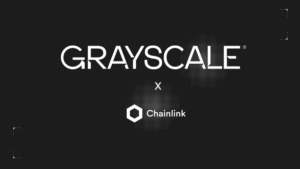TL;DR
- Blast is an Ethereum layer-2 network that offers up to 5% yield on ETH and stablecoins, and uses optimistic rollups to scale transactions.
- Blast launched its mainnet on Feb. 29, unlocking $2.3 billion in staked crypto, but faced criticism from Paradigm’s research head for delaying withdrawals and hyping the project.
- Blast’s TVL dropped by 17.5% after the launch, but the network claims to have unique features and Dapps that make it superior to other L2 solutions.
Blast, an Ethereum layer-2 scaling solution that offers up to 5% annual yield on ETH and stablecoins, launched its mainnet on Feb. 29, unlocking nearly $2.3 billion in staked crypto for the first time. The network, which uses optimistic rollups to increase throughput and lower gas fees, has seen around $400 million withdrawn by its 180,000 users since the launch.
The Blast Mainnet is NOW LIVE
Early Access users can bridge to Mainnet and use Blast-native Dapps that don’t exist anywhere else👇 pic.twitter.com/mt5dJOADMp
— Blast (@Blast_L2) February 29, 2024
Blast’s mainnet launch marks a significant milestone for the network, which had raised $20 million from Paradigm and Standard Crypto in November last year. The network had also attracted a lot of attention from airdrop hunters, who hoped to receive a Blast token that is expected to be distributed in May.
This is a network that uses a scaling technique called optimistic rollup to process transactions faster and cheaper on the blockchain. Users can earn up to 5% interest per year on their Ether and stablecoins, which are digital currencies that keep a stable value.
The interest comes from the network’s own reserves of ETH and T-Bills, which are short-term U.S. government bonds. The network also works with MakerDAO, a system that creates and manages the Dai stablecoin.
Blast’s Token Distribution and Paradigm Dispute

Blast has announced that it will allocate 50% of the airdrop to users based on their Blast Points, which are earned by depositing funds on the network, and the other 50% to Dapps that run on Blast.
Blast’s mainnet launch also comes with some controversy, as Paradigm’s research head Dan Robinson had publicly expressed his disagreement with Blast’s decision to launch the bridge before the L2, and to prevent withdrawals for three months.
Robinson had said that this was a bad precedent for other projects and that Blast’s marketing was cheapening the work of a serious team. Blast had responded by saying that it respects Paradigm’s opinion, but that it believes in its vision and strategy.
The launch of Blast caused a drop in its TVL, which went from $2.27 billion on Feb. 29 to $1.87 billion now, a decline of 17.5%. Nearly $400 million was taken out of the protocol, as per DeFiLlama data.
Blast claims to have several advantages over other L2 solutions, such as auto-rebasing, staking, and returning net gas revenue to Dapps. Blast also boasts several exclusive Dapps on its network, such as Pullix, a decentralized exchange that leverages Blast’s auto-rebasing feature to offer zero-slippage swaps.










